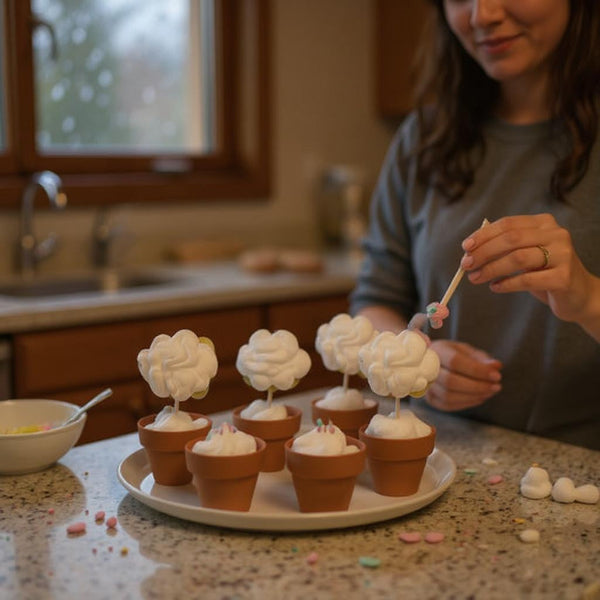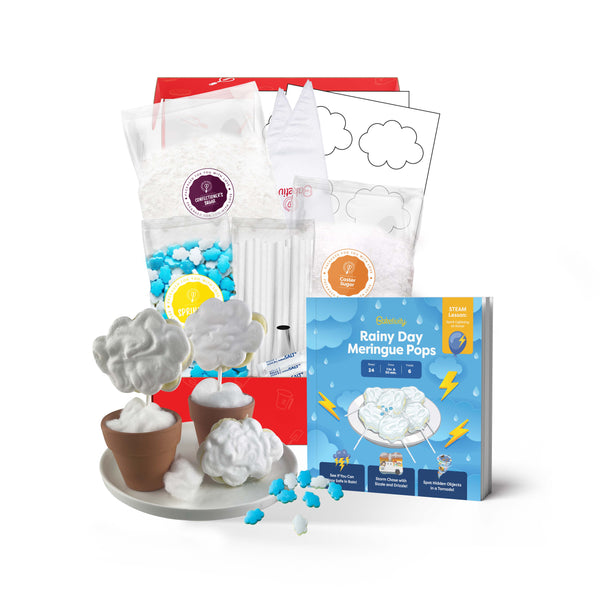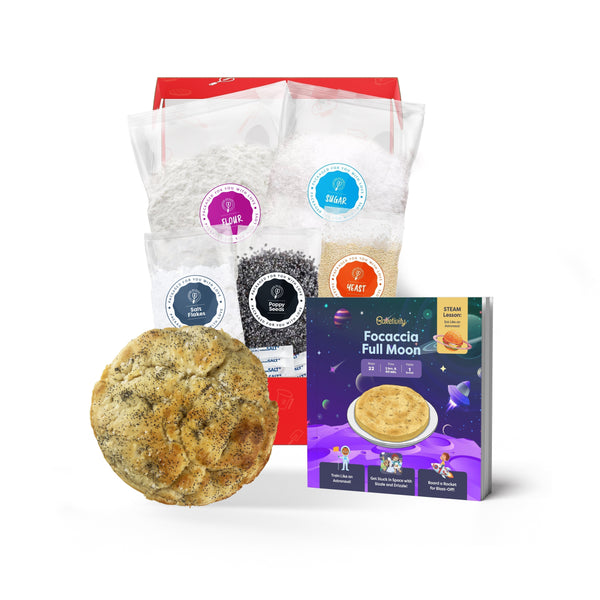Welcome to a comprehensive overview of the history of the bakery industry. In this article, we will explore the origins of baking, the impact of the industrial revolution and 20th-century developments, as well as modern trends and future possibilities. From ancient practices to technological innovations, join us on a journey through time to discover how the bakery industry has evolved and shaped our lives.
The Origins of Baking
Baking, as we know it today, has a long and fascinating history. Let's start our exploration with the
ancient baking practices that laid the foundation for this culinary art form.
Ancient Baking Practices and Techniques
The origins of baking can be traced back thousands of years to the ancient Egyptians and Mesopotamians. These early civilizations were pioneers in developing techniques for grinding grains, creating dough, and baking bread.
In Egyptian households, bread was a staple food, baked in simple mud ovens. The hieroglyphics found in tombs reveal the importance of baking in their daily lives.
Similarly, in Mesopotamia, the Babylonians and Assyrians used clay ovens to
bake various types of bread. These ancient societies recognized the nutritional value and cultural significance of bread, making baking a vital part of their communities.
Exploring further into the ancient world, we find that the Greeks and Romans also played significant roles in shaping baking practices. The Greeks are credited with developing the first enclosed ovens, known as klouva, which were used to bake various types of bread and pastries. Meanwhile, the Romans improved upon these techniques by inventing the commercial bakery, where bread was produced and sold to the public.
The Middle Ages and Baking Guilds
Fast forward to the Middle Ages, and the importance of baking continued to grow. Baking guilds emerged during this period, comprising
bakers who held the knowledge and skills necessary for producing quality bread.
During the Middle Ages, meat pies were a delicacy enjoyed by wealthier individuals, contrasting with the simpler fare consumed by the poor.
These guilds regulated baking practices, ensuring that bakers followed strict standards in terms of ingredients, measurements, and techniques. By the late Middle Ages, these guilds had become powerful organizations that shaped the bakery industry and protected the interests of both bakers and consumers.
The Evolution of Bread Baking
Bread baking has undergone significant transformations over the centuries, shaped by advances in technology, changes in societal needs, and the discovery of new ingredients. From ancient times to the present day, bread baking has evolved to become a sophisticated craft that requires skill, patience, and attention to detail.
In ancient times, bread baking was a labor-intensive process that involved manual mixing and kneading of dough. The discovery of yeast fermentation revolutionized bread baking, allowing for the creation of lighter, airier bread. The development of enclosed ovens and the introduction of new ingredients like sugar and spices further transformed the bread baking process.
During the Middle Ages, bread baking became a highly regulated profession, with guilds controlling the quality and standards of bread production. The Industrial Revolution brought significant changes to bread baking, with the introduction of mechanized mixing and
baking equipment. Today, bread baking is a global industry that encompasses a wide range of techniques, ingredients, and traditions.
The Industrial Revolution and the Bakery Industry
The industrial revolution marked a significant turning point in the
history of baking. Innovations in technology revolutionized the way bread and baked goods were produced, paving the way for mass production and accessibility.
The Industrial Revolution allowed for greater experimentation and convenience in cake-making, making various cake recipes more accessible to the average home cook.
As the industrial revolution unfolded, it brought about a wave of changes that deeply impacted the bakery industry. The shift from manual labor to mechanized processes not only transformed the efficiency of baking but also influenced the variety and availability of baked goods.
Introduction of Baking Machinery
During the 19th century, baking machinery started to replace traditional baking methods. Inventions like the dough mixer and steam-powered ovens streamlined the baking process, increasing efficiency and output.
These technological advancements not only sped up production but also improved the overall quality and consistency of baked goods. The precision and scale at which these machines operated allowed for a level of uniformity that was previously unattainable through manual labor.
Furthermore, the introduction of baking machinery opened up new possibilities for experimentation and innovation in recipes. Bakers were now able to explore different techniques and ingredients, leading to the creation of diverse and
unique baked goods
Mass Production of Baked Goods
With the advent of mass production, the bakery industry experienced a boom in the 19th and early 20th centuries. Baked goods became more affordable and accessible to a wider audience, marking a significant shift in our relationship with bread.
The proliferation of bakeries and the increased availability of baked goods reshaped societal norms around food consumption. Bakeries, once considered luxury establishments, became commonplace in communities, serving as hubs of social interaction and culinary delight.
Moreover, the mass production of baked goods during this period not only satisfied the basic dietary needs of the population but also catered to evolving tastes and preferences. The diversification of baked goods introduced a world of flavors and textures, enticing consumers to explore a rich tapestry of culinary delights.
The Science of Baking
Baking is a complex process that involves the interaction of multiple ingredients, temperatures, and techniques. Understanding
the science behind baking is essential for producing high-quality baked goods. The baking process involves a series of chemical reactions that occur when ingredients are mixed, heated, and transformed into a final product.
Leavening agents like baking powder and baking soda play a crucial role in bread baking, releasing carbon dioxide gas that causes dough to rise. The Maillard reaction, a chemical reaction between amino acids and reducing sugars, is responsible for the browning and flavor development of baked goods. Emulsification, the process of combining oil and water, is essential for creating stable mixtures and textures in baked goods.
Modern baking has been revolutionized by advances in technology and the development of new ingredients. The use of precision ovens, automated mixers, and specialized ingredients has enabled bakers to produce high-quality baked goods with consistency and precision.
The Bakery Industry in the 20th Century
As we entered the 20th century, the bakery industry continued to evolve, experiencing both challenges and exciting advancements.
The 20th century marked a period of significant transformation for the bakery industry, with innovations and societal changes shaping its trajectory. From traditional neighborhood bakeries to large-scale commercial operations, the landscape of baking underwent a profound shift, reflecting the evolving tastes and demands of consumers.
The Rise of Supermarket Bakeries
The rise of supermarkets in the mid-20th century had a profound impact on the bakery industry. With the convenience and variety they offered, supermarket bakeries steadily gained popularity.
Consumers could now access freshly baked goods along with their grocery shopping, making it easier to enjoy bakery treats on a daily basis. Supermarket bakeries further diversified their offerings, specializing in cakes, pastries, and customized celebration cakes, catering to a broad range of tastes and occasions.
Additionally, the emergence and significance of pastry chefs as a distinct profession became more pronounced. These professionals are known for their artistic skills in creating exquisite pastries and desserts, emphasizing both flavor and visual appeal in their creations.
Moreover, the emergence of supermarket bakeries not only revolutionized the way baked goods were purchased but also influenced
baking trends and techniques. Bakers working in these settings embraced automation and mass production methods to meet the growing demand, leading to increased efficiency and standardization in the industry.
Impact of World Wars on the Bakery Industry
World Wars I and II brought significant challenges to the bakery industry, as resources became scarce and rationing was implemented. Bakers had to adapt to the circumstances and find innovative ways to continue serving their communities.
The resourcefulness displayed during these difficult times resulted in the creation of alternative ingredients and recipes, such as using potato flour instead of wheat flour. This resilience further demonstrated the vital role that bakeries played in society, providing nourishment and a sense of comfort during times of hardship.
Furthermore, the wartime period spurred collaboration and knowledge-sharing among bakers, leading to the exchange of techniques and recipes that would influence baking practices for years to come. The spirit of adaptation and creativity that emerged during these tumultuous times left a lasting impact on the bakery industry, fostering a culture of innovation and versatility among bakers worldwide.
Modern Baking Developments in the Bakery Industry
As we move into the modern era, the bakery industry continues to adapt and innovate, keeping pace with changing consumer preferences and emerging trends.
Bread baking began as a communal activity, involving families and communities coming together to prepare and bake bread, showcasing the ongoing importance of these time-honored methods in modern culture.
The Influence of Health Trends
Health-conscious consumers have revolutionized the bakery industry by demanding healthier alternatives to traditional baked goods. Whole grain, gluten-free, and vegan options have become increasingly popular, inspiring bakers to
explore innovative ingredients and techniques.
Bakeries are now incorporating wholesome grains, alternative sweeteners, and natural flavorings into their creations, providing options that cater to a broader range of dietary needs and preferences.
Technological Innovations in Baking
Technology continues to shape the bakery industry, enabling bakers to experiment with new methods and improve productivity.
From high-tech ovens with precise temperature controls to dough automation systems, these advancements save time and effort while ensuring consistent quality. Furthermore, digital platforms and online ordering have made it easier than ever for customers to connect with their favorite bakeries.
Challenges and Opportunities in the Baking Industry
The baking industry faces numerous challenges, from changing consumer preferences to increasing competition from industrial-scale bakeries. However, these challenges also present opportunities for innovation, growth, and differentiation.
One of the biggest challenges facing the baking industry is the demand for freshly baked bread. Consumers are increasingly seeking out artisanal bakeries and specialty bread shops that offer high-quality, unique bread products. To meet this demand, bakers must invest in new technologies and techniques that enable them to produce high-quality bread quickly and efficiently.
Another challenge facing the baking industry is the rise of frozen pizza and other convenience foods. While these products may be convenient, they often lack the quality and nutritional value of freshly baked bread. Bakers must find ways to compete with these products by offering healthier, more sustainable alternatives that appeal to consumers.
Despite these challenges, the baking industry is also filled with opportunities for growth and innovation. The rise of online platforms and social media has enabled bakers to connect with customers and promote their products. The increasing demand for artisanal and specialty baked goods has created new opportunities for bakers to differentiate themselves and build loyal customer bases.
The Cultural Significance of Baked Goods
Baked goods have played a significant role in human culture and history, serving as a staple food, a symbol of community, and a source of comfort and sustenance. From ancient times to the present day, baked goods have been used to celebrate special occasions, mark important milestones, and bring people together.
Bread, in particular, has been a staple food in many cultures around the world. It has been used as a symbol of hospitality, generosity, and community. The act of breaking bread together is a universal gesture of friendship and solidarity.
Cakes and pastries have also played a significant role in human culture, serving as a symbol of celebration and indulgence. From birthday cakes to wedding cakes, these sweet treats have been used to mark important milestones and bring people together.
In many cultures, baked goods are also imbued with symbolic meaning. For example, in some cultures, bread is seen as a symbol of life and sustenance, while in others, it is seen as a symbol of wealth and prosperity. Understanding the cultural significance of baked goods is essential for appreciating the role they play in human society.
The Future of the Bakery Industry
As we look ahead, the bakery industry faces both exciting opportunities and pressing challenges. Let's explore some key aspects that will shape its future.
Sustainability and the Bakery Industry
In an increasingly environmentally conscious world, sustainability has become a crucial factor in the bakery industry's future. Bakers are exploring ways to reduce waste, employ eco-friendly packaging, and source ingredients responsibly.
From supporting local farmers to using renewable energy sources, bakeries are making strides towards a more sustainable and socially responsible future.
The Role of Artisan Bakeries
Despite the rise of mechanization and mass production, the demand for artisanal baked goods continues to grow.
Artisan bakeries emphasize traditional baking techniques,
handcrafted products, and using locally sourced ingredients. They bring a personal touch and a sense of authenticity, appealing to consumers seeking unique and high-quality bakery experiences.
As we conclude our comprehensive overview of the bakery industry's history, we can appreciate how it has evolved from ancient baking practices to the dynamic and innovative industry we know today.
From the first loaves baked in a mud oven to the bustling bakery aisles of supermarkets, the bakery industry has adapted to societal changes and consumer demands. As we embrace technology and embrace sustainability, we eagerly await the next chapter in this delicious history.
Join the Baketivity Family and Continue the Baking Tradition
As we've seen, the art of baking has been a cherished tradition through the ages, evolving with each generation. Now, it's your turn to be part of this sweet history. Embrace the joy of baking with your loved ones by joining the Baketivity
Baking Club. Our baking
kits, infused with quality, creativity, and the spirit of family bonding, are designed to build lasting memories and skills. Whether you're a novice or a seasoned baker, Baketivity provides an enriching experience that combines the love of baking with educational fun. Don't miss out on the opportunity to create, learn, and enjoy the pleasures of baking. today and let's continue to bake the world a better place, one delicious treat at a time.




